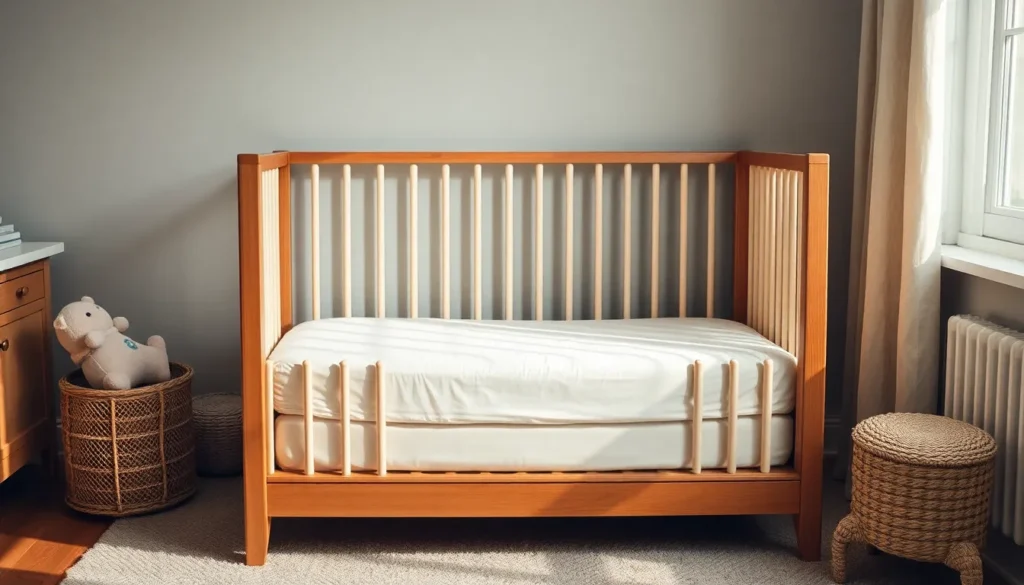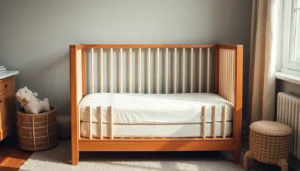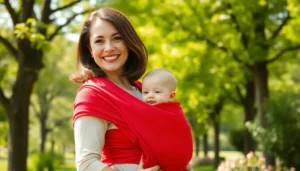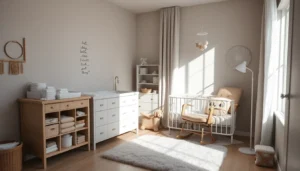Table of Contents
ToggleWhen it comes to baby gear, the crib is the VIP lounge of infant sleep. But let’s face it—nobody wants their little one to turn into a crib acrobat or a sleep ninja. Ensuring crib safety isn’t just a good idea; it’s essential for peace of mind and a good night’s sleep (for both baby and parents).
Importance of Crib Safety Guidelines
Crib safety guidelines play a crucial role in ensuring the well-being of infants. Recognizing that cribs serve as a primary sleep environment allows caregivers to appreciate their significance. Following these guidelines minimizes the risk of injuries, contributing to a safer sleeping space for babies.
Maintaining proper crib safety features prevents accidents and enhances peace of mind for parents. The implementation of safety standards, such as ensuring slats are no more than 2 3/8 inches apart, reduces the likelihood of entrapment. Adhering to manufacturer instructions for assembly and usage ensures the crib remains stable and secure.
Regular inspections of the crib for wear and tear further bolster safety. Checking for loose hardware or damage to components allows caregivers to act promptly, protecting the infant. Using a firm mattress designed for the crib size eliminates risks associated with excessive gaps or softness.
Safe positioning of bedding also enhances crib safety. Avoiding pillows, toys, or loose blankets prevents suffocation hazards. Keeping the crib away from windows, cords, or other potential dangers further ensures a child’s security.
Promoting safe sleep practices contributes to healthier sleep habits. Placing infants on their backs for sleeping lowers the risk of sudden infant death syndrome (SIDS). These practices, when combined with proper crib safety, create a supportive environment for restful sleep.
Prioritizing crib safety guides caregivers in making informed choices for their children’s well-being. Implementing these guidelines fosters a nurturing atmosphere where infants can thrive, ultimately benefiting both the child and the family.
Key Features of a Safe Crib
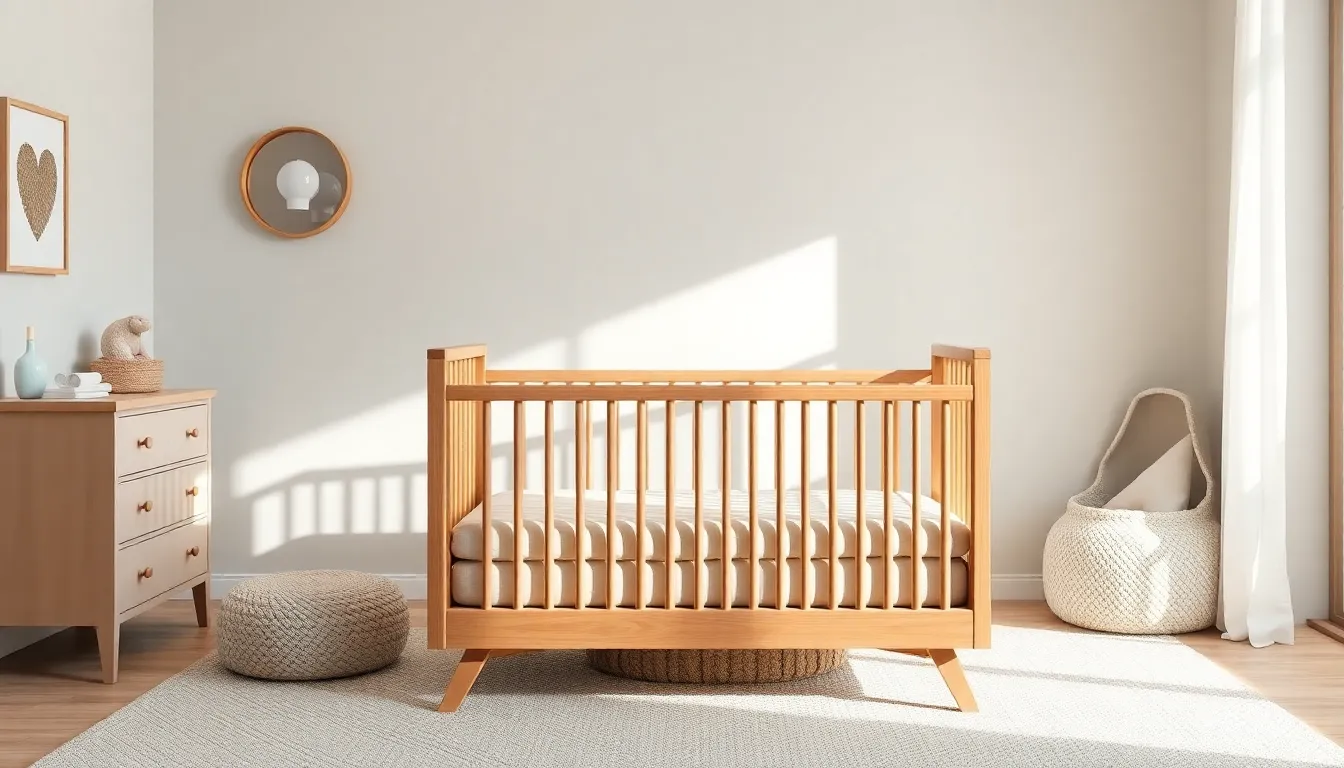
Selecting a crib involves careful attention to design and materials, ensuring maximum safety for the infant.
Crib Design and Construction
Crib design must prioritize structural integrity. Cribs with solid construction withstand daily use without compromising safety. Slats should not exceed 2 3/8 inches apart, preventing the infant from getting stuck. Corner posts must be flush with the rails or no more than 1/16 inch above them to avoid accidental entrapment. Bursting springs or hardware that becomes loose compromise the crib’s safety. Opting for cribs that meet current safety standards, such as those set by the Consumer Product Safety Commission, further enhances safety and reduces risk.
Materials Used
Choosing appropriate materials is essential for crib safety. Non-toxic finishes and paints ensure the infant does not come into contact with harmful chemicals. Solid wood cribs provide sturdiness and durability over time. Avoiding cribs made from particleboard or laminated wood minimizes exposure to toxic substances. Fabrics and bedding should not contain small parts or strings that could pose risks. Selecting mattresses made of firm, safe materials prevents suffocation and supports healthy sleep. Prioritizing high-quality materials assures caregivers of the crib’s safety and longevity.
Proper Mattress Fit and Selection
Selecting the right mattress is essential for crib safety. Proper mattress fit ensures a snug and secure environment for infants.
Importance of Mattress Fit
Mattress fit plays a crucial role in preventing entrapment or suffocation. The gap between the mattress and crib sides should not exceed two fingers. A firm mattress supports healthy sleep posture, reducing risks of falls and injuries. Regularly measuring the crib’s dimensions helps caregivers choose the right size. Assessing fit frequently after adjustments makes sure safety is maintained as the crib is used over time.
Choosing the Right Mattress
Choosing the right mattress requires attention to materials and firmness. Opt for a mattress that meets safety standards, specifically those set by the Consumer Product Safety Commission. Memory foam and soft materials pose risks; instead, select a firm mattress to promote safe sleep. Assessing thickness guarantees it fits snugly into the crib without gaps. Non-toxic materials ensure no harmful chemicals affect the baby’s health. Always read reviews and consider brands known for quality and safety.
Safe Bedding Practices
Safe bedding practices significantly enhance crib safety and promote healthier sleep for infants. Quality materials and proper positioning minimize risks and ensure a secure sleeping environment.
Types of Safe Bedding
Choosing appropriate bedding is essential for safety. Firm mattresses are the first choice, as they provide the necessary support for infants. Fitted sheets made of breathable cotton enhance comfort while reducing suffocation risks. Blankets should always be avoided; use a sleep sack instead for safer warmth. Pillows and toys are unsafe in cribs, as they increase the chances of accidents. Following these recommendations ensures that the crib remains a safe place for sleep.
Avoiding Hazards in the Crib
Eliminating hazards within the crib creates a secure environment. Position the crib away from windows, curtains, and cords to prevent strangulation and injury. Ensure that bedding fits snugly to prevent gaps that could lead to entrapment. Conduct regular checks for wear and tear, focusing on the mattress and crib sides. Caregivers should also remove any potential hazards, including heavy blankets and stuffed animals. Prioritizing these measures greatly reduces risks and protects the child’s well-being.
Placement of the Crib
Crib placement significantly impacts infant safety and comfort. Selecting the right location ensures a secure sleeping environment.
Ideal Location for Crib Setup
Position the crib away from direct sunlight to maintain a comfortable temperature. Ideally, caregivers should place it in a space with minimal noise, promoting restful sleep. Avoid corners where airflow may be restricted, as this can affect air quality. Think about placing the crib within sight for easy supervision during sleep. Ensure the area is free from clutter to prevent accidents and provide parents with ease of access.
Avoiding Potential Dangers
Keep the crib away from windows to eliminate risks of falls and ensure safety from any external hazards. Remove any cords or strings nearby that could pose a strangulation threat. Consider the proximity to furniture and other objects; a distance of at least 3 feet is advisable. Ensure that heavy items nearby are secured to prevent tipping. Regularly checking the surrounding space for potential hazards maintains a safe sleeping environment for infants.
Understanding Regulations and Standards
Crib safety regulations and standards exist to protect infants during sleep. The Consumer Product Safety Commission (CPSC) establishes safety guidelines that cribs must meet. These guidelines include specific measurements for crib slats, ensuring they are no more than 2 3/8 inches apart to prevent entrapment. Caregivers must follow manufacturer assembly instructions to guarantee proper setup.
Installation checks play a critical role in crib safety. Regular inspections for signs of wear and tear help maintain a secure environment. When assessing the crib, caregivers should verify that corner posts are flush with the rails, eliminating the risk of accidents. Solid construction is essential, as cribs must withstand daily use without compromising safety.
Selecting the right materials also contributes to safety. Non-toxic finishes and sturdy wood are preferable over materials like particleboard. Guidelines recommend using firm mattresses made from safe materials to reduce the risk of suffocation. Measurements matter, so ensuring a snug mattress fit is crucial, with gaps not exceeding two fingers.
Bedding choices impact crib safety significantly. Caregivers must opt for breathable cotton fitted sheets while avoiding blankets, pillows, and toys. Safe sleep practices, like placing infants on their backs, align with health recommendations and further enhance safety.
Crib placement also requires careful consideration. Positioning the crib away from windows and hazardous items ensures a quieter sleep space. High visibility allows for easier supervision, and keeping the area clutter-free minimizes the risk of falls. Prioritizing these regulations and standards promotes a safer sleeping environment for infants, helping caregivers create secure spaces that meet safety requirements.
Prioritizing crib safety is essential for ensuring a secure sleeping environment for infants. By adhering to established guidelines and recommendations caregivers can significantly reduce the risk of injuries. Choosing the right crib and mattress along with safe bedding practices plays a crucial role in promoting healthy sleep habits.
Regular inspections and proper placement of the crib further enhance safety. By staying informed about safety standards and making mindful choices caregivers can create a peaceful and safe space for their little ones. Ultimately these efforts contribute to the well-being of both infants and their families.

